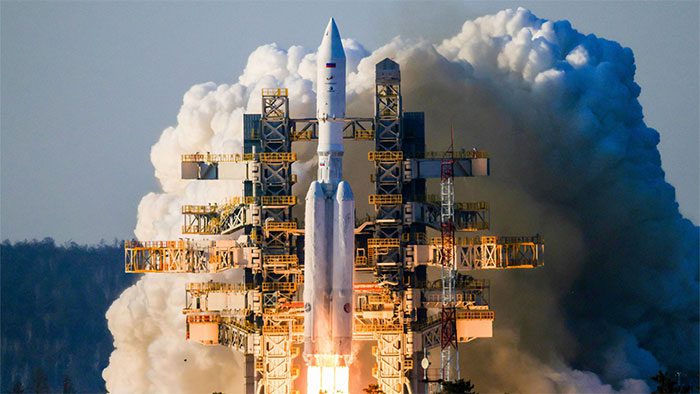After two consecutive days of last-minute cancellations due to technical issues, on April 11, Russia successfully conducted a test launch of the Angara-A5 rocket from the Vostochny Cosmodrome in the Amur region of the Far East.

The Angara-A5 rocket lifting off from the Vostochny Cosmodrome, Amur, Russia, on April 11, 2024. (Photo: AFP/TTXVN)
During the live broadcast of the launch, the Russian space agency Roscosmos reported that a few minutes after leaving the launch pad, the rocket was traveling at speeds exceeding 25,000 km/h and had entered orbit.
Roscosmos stated that the Angara-A5, launched with a test payload, operated normally. The head of Roscosmos, Iury Borisov, declared this event significant. The Angara-A5 rocket is much more environmentally friendly compared to the Proton M rocket, which has been operational since the mid-1960s.
Russia first tested the Angara-A5 in 2014, followed by another test in 2020, both from the Plesetsk Cosmodrome located in northern Russia.
Plans are in place for a more advanced version, the Angara-A5M, capable of carrying larger payloads into orbit in the future.
The launch of the Angara rocket is a crucial milestone. Russia intends to use this very rocket to launch modules for building its own space station by 2027. Additionally, the Angara-A5 will also transport crewed spacecraft to this space station.





















































